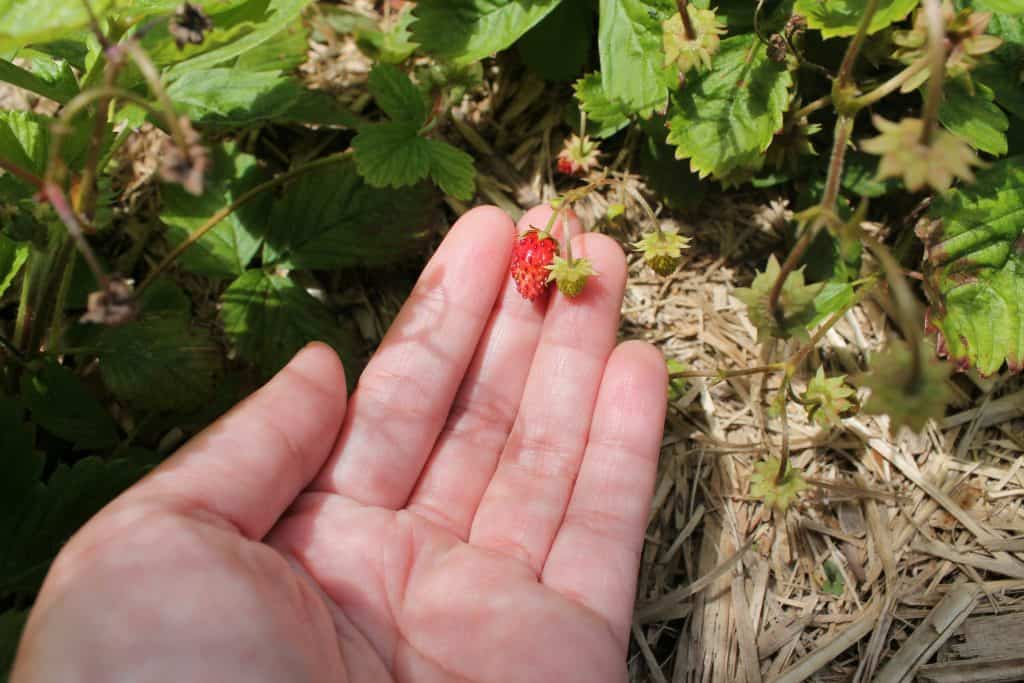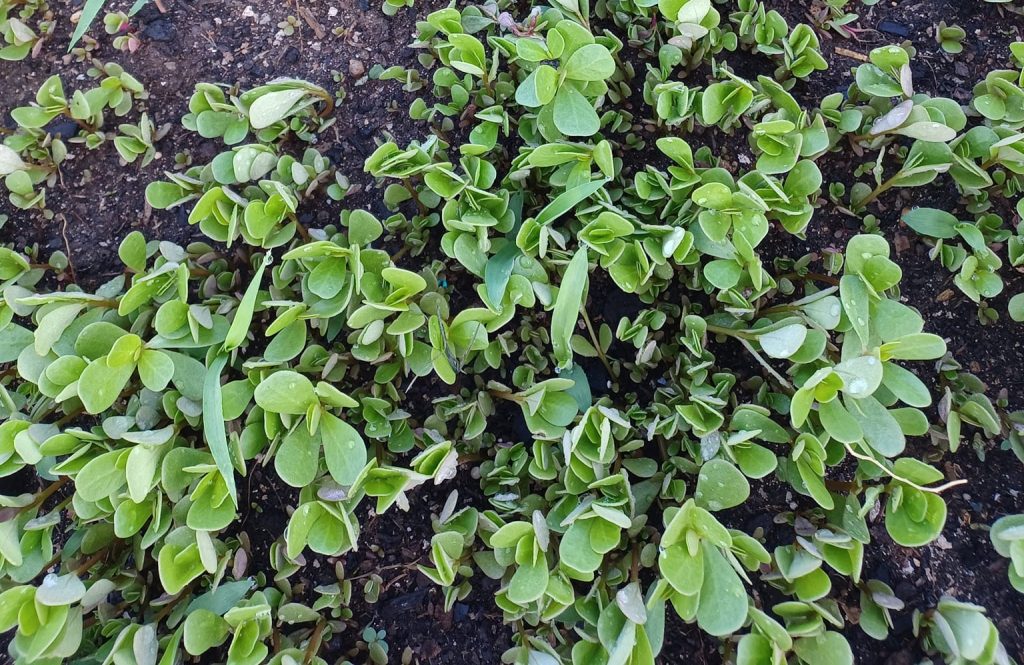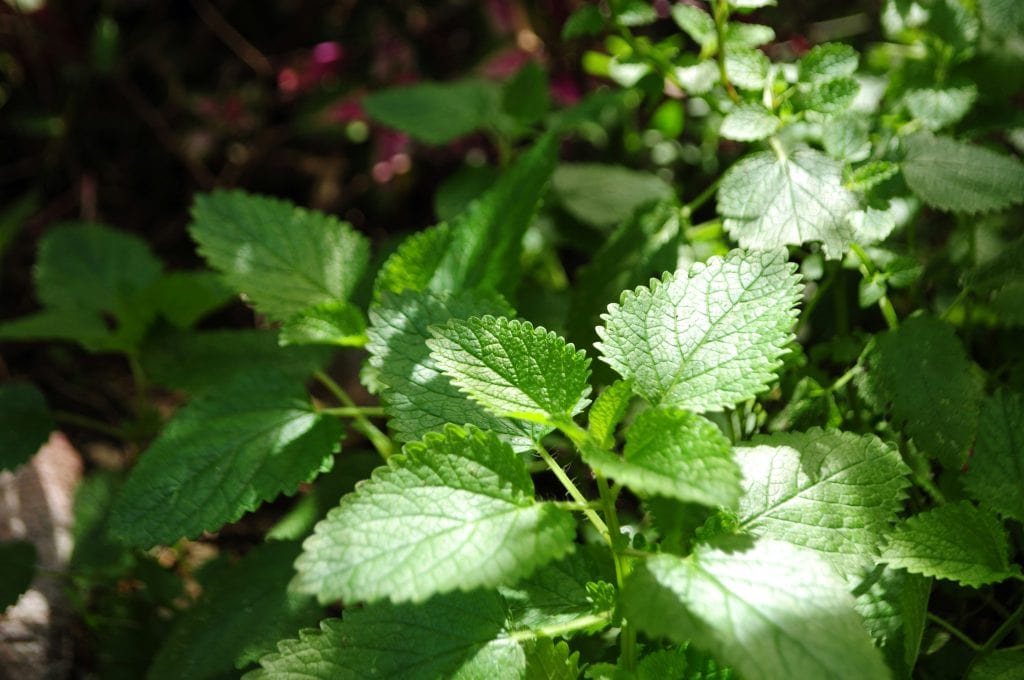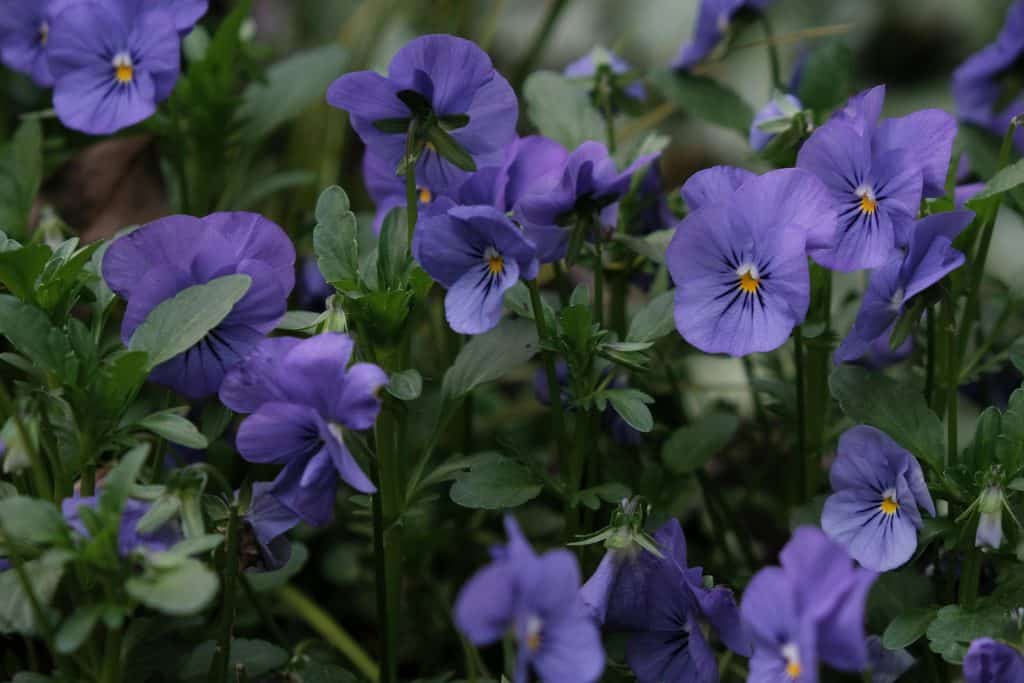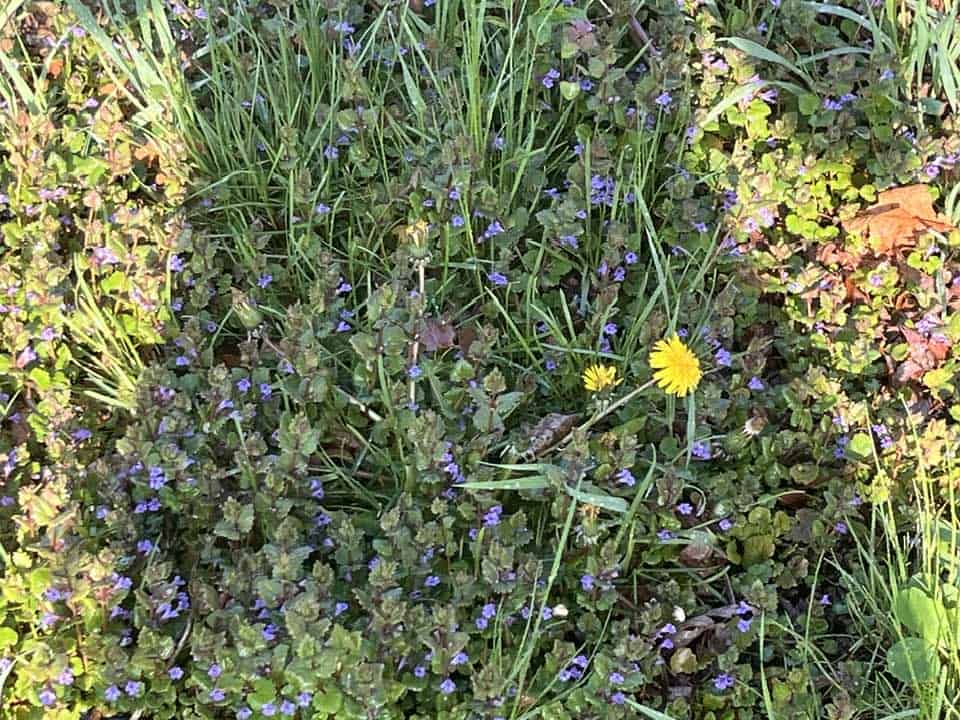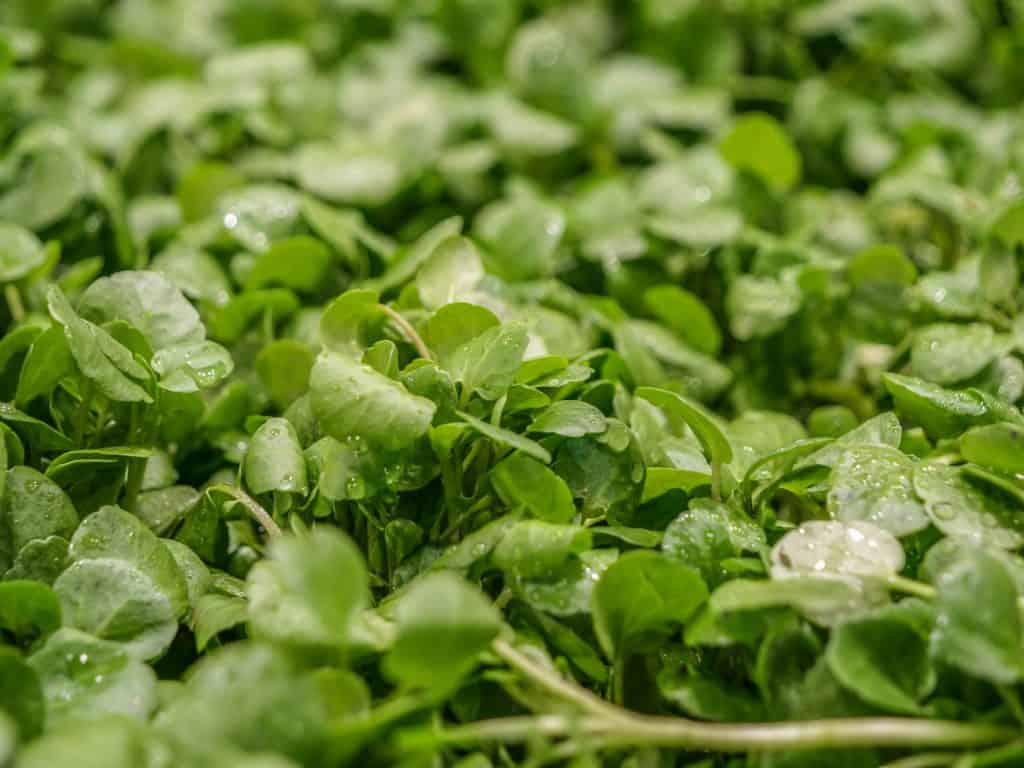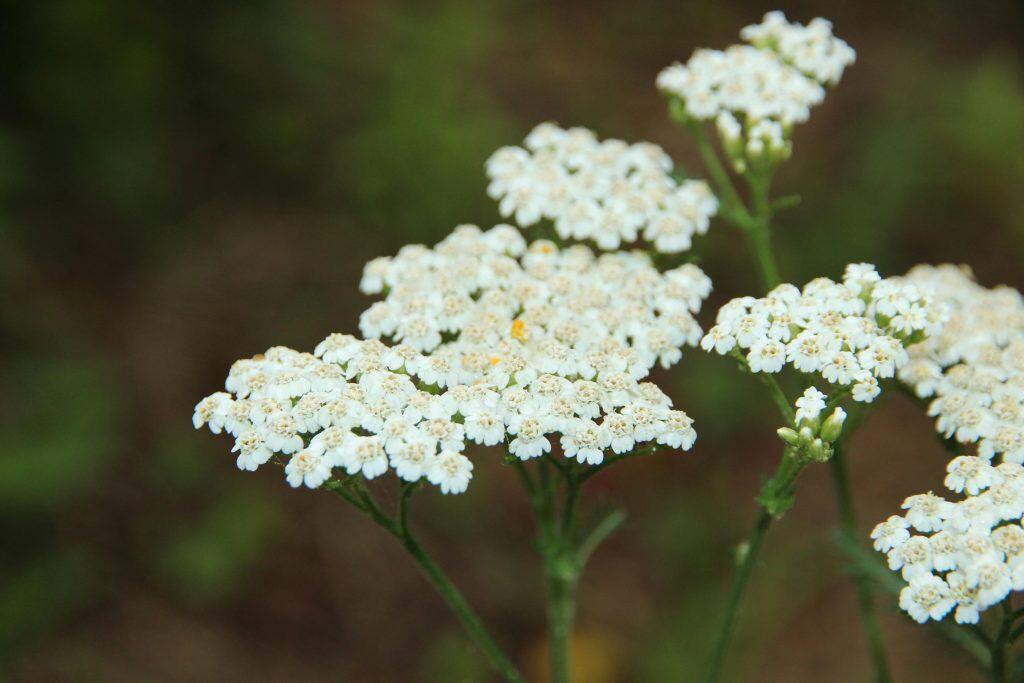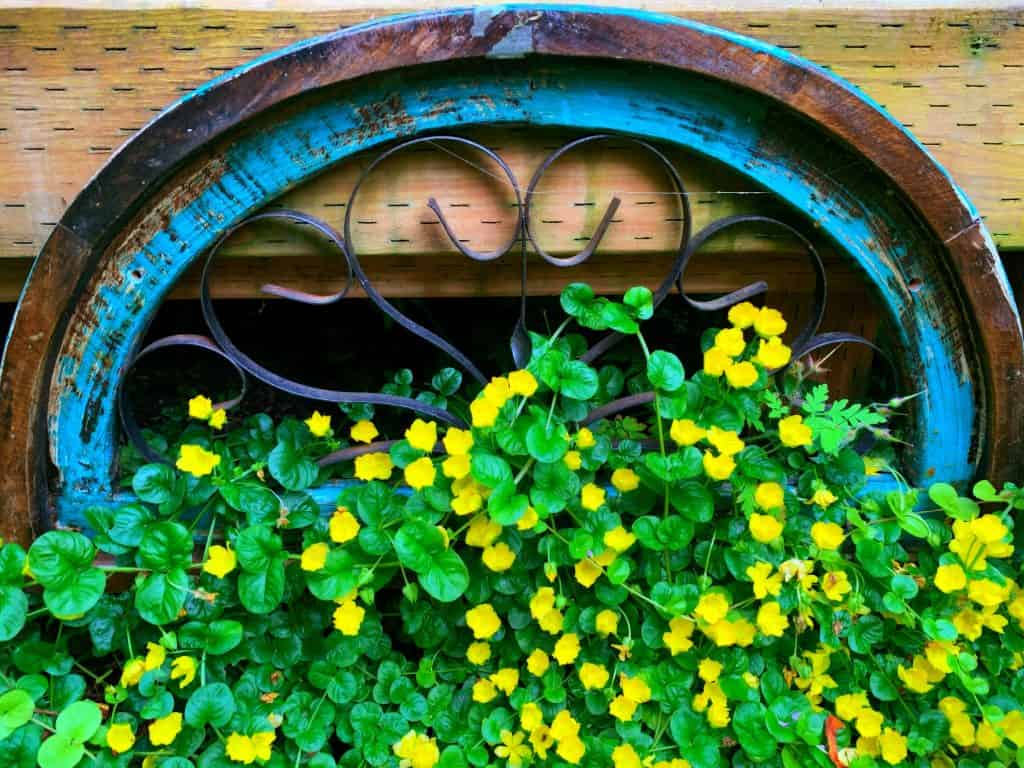If you’ve ever looked at a patch of bare soil and thought, “I should plant something here,” you’re not alone. Ground covers are a good way to keep weeds down, hold moisture in the soil, and make your yard look nice.
But if you're going to grow something, why not make it something you can eat too?
That’s where edible ground covers come in. These are low-growing plants that not only cover the ground, but also give you leaves, flowers, or fruits you can actually use in the kitchen.
Some taste lemony, some spicy, and some just plain sweet. And a lot of them are easy to grow, even if you don’t have much time or space.
In this article, we’ll go over 15 edible ground covers that are useful, good-looking, and don’t need a lot of fuss. Whether you’ve got shade, full sun, dry soil, or something in between, there’s probably one (or a few) here that’ll work for you.
1. Alpine Strawberry (Fragaria vesca)
Alpine strawberries are one of those plants that quietly do their job without causing problems.
They stay small and don’t send out runners like regular strawberries, so they won’t take over your garden beds. That makes them easy to tuck under taller plants or along pathways without worrying they’ll spread too far.
The berries are tiny, red, and sweet. They ripen early in the summer and are great for eating right off the plant or mixing into jams and pies. They also handle a bit of shade better than most fruiting plants, which is handy if you’ve got trees or taller crops nearby.
Alpine strawberries are usually free from pests and disease. They like well-drained soil and grow best in zones 4 to 9. Once they’re in, they’re pretty low-maintenance and just keep producing.
2. Wild Ginger (Asarum canadense)
This isn’t the kind of ginger you buy at the store.
Wild ginger has a spicy, earthy root that can be used in a few simple recipes – like making syrup for desserts or boiling it in milk for a warm drink. It’s got its own flavor, so it’s not for everyone, but it’s worth trying if you’re into homemade kitchen stuff.
It spreads out like a nice green carpet in the spring, especially in shady, damp areas.
If you’ve got a wooded corner or a place that stays moist, wild ginger will probably be happy there. It does well in soil that’s rich in organic matter and grows in zones 4 to 8.
Even if you don’t end up using the roots much, it’s still a nice-looking plant that fills in space and helps keep weeds down.
3. Purslane (Portulaca oleracea)
Purslane shows up just about everywhere – driveways, garden beds, even sidewalk cracks.
A lot of folks think it’s a weed, but it’s actually one of the most useful and easygoing edible ground covers you can grow. It spreads fast, fills in bare spots quickly, and doesn’t ask for much.
The whole plant is edible – leaves, stems, flowers – and it’s got a lemony taste with a little crunch, kind of like bean sprouts.
It’s also packed with omega-3s, which is rare for a plant. You can toss it into salads, mix it into stir-fries, or even add it to soups like Thai coconut soup.
Purslane grows best in full sun and can handle zones 2 all the way to 11, so it works pretty much everywhere. If you’re looking for something that grows fast, tastes good, and doesn’t need pampering, this is a solid choice.
4. Wintergreen (Gaultheria procumbens)
Wintergreen is a little evergreen plant that stays green all year and produces small white flowers followed by bright red berries. Both the berries and the leaves are edible, and they’ve got that distinct wintergreen flavor – kind of minty with a fruity twist.
You can dry the berries for snacks or make syrup from the leaves to drizzle over desserts. It grows best in acidic soil that stays moist but drains well, and it likes full sun to part shade. It’s hardy in zones 3 to 8.
Wintergreen stays low to the ground and spreads slowly, making it a tidy and good-looking ground cover. It’s a nice pick if you want something edible that also gives your garden a little winter color.
5. Peppermint (Mentha spp.)
Peppermint is one of those plants that smells great and grows like it means it.
It's a creeping perennial that spreads fast, which is helpful if you're trying to green up a bare spot – but it can get out of hand if you’re not careful.
A lot of folks plant it in pots and sink them into the ground to keep it from taking over.
If you’re using it as a ground cover, Corsican mint is a good variety to look for. It stays low and forms a dense mat of tiny green leaves. Like other mints, it likes moist, well-drained soil and does fine in both sun and part shade. It grows in zones 3 to 11.
The fresh leaves are great in salads, pasta dishes, or turned into a simple syrup for drinks or desserts. And once it’s established, you’ll have more than enough to pick from.
6. Violet (Viola spp.)
Violets grow easily in shady spots and untreated lawns, making them one of the easier ground covers to work with. They don’t need much, and they tend to show up on their own if the conditions are right.
Both the leaves and the purple flowers are edible. The leaves are mild with a slight lemony edge, good for tossing into a salad or smoothie. The flowers are often used as a garnish, especially on cakes or fruit salads.
Violets also help hold moisture in the soil and can crowd out weeds, acting like a living mulch. They do well in zones 3 to 9 and are especially useful if you’ve got a garden bed that stays mostly shaded throughout the day.
7. Lemon Balm (Melissa officinalis)
Lemon balm is part of the mint family, but it’s not as aggressive as peppermint.
It’s got bright green, slightly fuzzy leaves that smell like lemon when you rub them. It grows in small clumps, but over time, it can fill in an area nicely if left alone.
The leaves are best used fresh. You can steep them in hot water for a calming tea, or chop them into brines for fish, pork, or chicken. They also work well in jellies, baked goods, or as a garnish.
Lemon balm grows in zones 4 to 9 and likes full sun to part shade with moist, well-drained soil. It’s a laid-back plant that’s easy to grow and good to have around if you like herbal teas or simple flavor boosts in your cooking.
8. Ground Ivy (Glechoma hederacea)
Ground ivy is often seen as a weed, but it actually has a lot going for it.
It spreads low and wide with small, roundish leaves and tiny purple flowers. It gives off a minty smell when you crush it, and the leaves are edible.
You can add the fresh leaves to spring salads, soups, spring rolls, or even mix them into pesto. Some folks muddle it into drinks like you would with regular mint.
Just be aware that it spreads by runners and can take over if not managed, so it’s best for areas where you don’t mind it spreading out.
It grows in zones 3 to 10 and prefers part shade with moist, well-drained soil. If you’ve got a tricky spot where not much else wants to grow, ground ivy might be the fix.
9. Watercress (Nasturtium officinale)
Watercress is a leafy plant that likes things wet – think along stream banks or in soil that stays damp. It grows in small clumps with waxy leaves and tiny white flowers, and it’s got a peppery bite that works great in food.
You can add the leaves to sandwiches or wraps, especially alongside sweet fruits, or cook them in stir-fries like you would spinach or bok choy. It’s a bit more delicate than some of the other ground covers, but if you’ve got a shady, damp spot, it’ll be right at home.
It does best in zones 5 to 9 and prefers part sun to full shade. If you keep the soil moist and give it some room, watercress will give you a steady supply of greens for most of the growing season.
10. Gold Moss (Sedum acre)
Gold moss, also called stonecrop, is a hardy little succulent that stays low to the ground and spreads easily. It’s light green most of the time, but when it flowers, it puts out bright yellow blooms that stand out in any bed or rock garden.
The tiny, fleshy leaves are edible and can be eaten raw in salads or used as a crunchy topping on soups – kind of like a natural crouton. It doesn’t need much water and actually prefers things on the dry side, so it’s great for hot spots or areas with poor soil.
It grows in full sun and moist (but not soggy) soil, and it’s hardy across a wide range – from zone 3 to 11. If you need something tough and edible that won’t mind being ignored a bit, gold moss is a solid choice.
11. Thyme (Various species)
Thyme is one of those herbs that works just as well in the kitchen as it does in the garden.
It grows low and forms a dense mat of tiny leaves, and some types – like creeping thyme – can even handle foot traffic.
That makes it a good option for planting between stepping stones or in place of grass in a small yard.
It’s drought-tolerant once established and puts out small flowers in summer that attract pollinators. As for flavor, thyme is strong, woody, and savory – perfect for seasoning meat, soups, stews, or roasted vegetables.
There are different kinds like French, English, lemon, and creeping thyme, and they vary a bit in hardiness. Most grow well in zones 3 to 11 depending on the type, and they all like full sun and well-drained soil. Regular trimming keeps it compact and productive.
12. Pineapple Weed (Matricaria discoidea)
Pineapple weed is the kind of plant that pops up in rough, gravelly places and doesn’t ask for much. It’s a low-growing, wild cousin of chamomile, and when you crush its little green flower heads, it smells faintly like pineapple.
It’s edible and mild, with a tart, fruity flavor that works well in teas, syrups, or tossed into salads. The leaves are fine and feathery, and the flower heads don’t have petals, which makes them easy to recognize once you know what you’re looking for.
It thrives in full sun and dry soil, especially in disturbed areas, and it grows in zones 3 to 9.
If you want an easygoing ground cover that doesn’t need pampering and gives you a nice homemade tea ingredient, this one’s worth keeping around.
13. Oregano (Origanum vulgare subsp. hirtum)
Oregano is a familiar kitchen herb, but it also makes a great edible ground cover. It spreads out in low clusters of oval-shaped leaves and blooms with small white or pinkish-purple flowers. If you keep harvesting it regularly, it stays nice and compact.
Aside from flavoring sauces, pizza, and roasted veggies, oregano has a bonus: it helps repel sap-sucking bugs like aphids. That makes it a handy companion plant for things like cabbage and broccoli. It doesn’t mind dry conditions once it’s established and is pretty forgiving overall.
It grows in zones 4 to 10 and prefers full sun and well-drained soil. If you’re looking for a ground cover that’s both useful in the kitchen and good for the garden, oregano is a solid pick.
14. Yarrow (Achillea millefolium)
Yarrow has soft, feathery leaves and flat clusters of tiny white flowers that pollinators love.
It spreads underground by runners and can cover a lot of ground if left unchecked, so it’s smart to contain it like you would with mint.
Its roots dig deep into the soil, helping to break up hard ground and pull nutrients up to the surface. That makes it great for improving soil health over time. You can use the young leaves in small amounts in tea or salads, though the flavor can be strong if overused.
It grows in zones 3 to 9 and can handle poor soil, sun, and drought. If you’re after a tough, beneficial plant that gives back to the garden, yarrow checks a lot of boxes.
15. Creeping Jenny (Lysimachia nummularia)
Creeping Jenny is known for its round, light green leaves and trailing stems that spread fast.
It fills in gaps between stepping stones and spills over the edges of beds or baskets, adding a splash of green wherever it goes.
In spring, it produces little yellow flowers, and both the flowers and the tender tips of the plant are edible. The tips taste a bit like peas, and the flowers can have a light coriander flavor – good in fresh tomato salads or just tossed on top of a dish as a garnish.
It prefers moist soil and part shade and grows well in zones 3 to 9. Just like with mint, it’s a good idea to keep an eye on it or give it a boundary so it doesn’t wander too far.
Start Replacing Bare Soil with Edible Ground Covers That Do More Than Just Look Nice
If you’ve got empty spots in your yard or garden, edible ground covers are a smart way to fill them in while also getting something useful out of the space.
Whether you need something tough for full sun or something mellow for shady, damp areas, there’s a plant in this list that’ll fit the bill.
Some of these grow fast and need a little watching, while others stay put and ask for hardly anything. A few are perfect for cooking, and others bring in pollinators or help improve your soil. The trick is choosing the right ones for your conditions – and mixing and matching if it makes sense.
Start small if you’re unsure, test a couple of varieties in different corners of your yard, and see which ones take off.
Over time, you’ll have less weeding to do, more greenery to enjoy, and even a few ingredients right at your feet when it’s time to make dinner.
FAQs
1. Can I grow these edible ground covers with vegetables or fruit trees?
Yes, many of them (like oregano, thyme, and violets) can grow right under or around other crops without causing issues. Some even help repel pests or keep moisture in the soil.
2. Will any of these ground covers take over my garden?
A few, like peppermint, ground ivy, and creeping jenny, spread fast. They’re best planted in containers or areas where you don’t mind them spreading, or where you can give them a boundary.
3. Are all parts of these plants safe to eat?
Not always. Some plants have only specific edible parts – like the flowers or young leaves. Always double-check what part is safe and how to prepare it before eating.
4. Can I grow these in pots or raised beds?
Yes, most of them will do fine in containers, especially the more aggressive types. This is also a good way to test them out before planting them in the ground.
5. What’s the easiest one to start with for beginners?
Purslane is a good starter – it grows fast and handles poor conditions well. Alpine strawberries and thyme are also beginner-friendly if you’ve got the right growing conditions.
Ready To Transform Your Garden?
Are you looking for the best way to layout your garden beds? Maybe you're feeling a bit stuck on how to make the most of your space?
We’ve got you covered! Check out our 101+ Garden Bed Layout Ideas for your next raised bed project. This guide is filled with creative and practical ideas that can help you design a garden that fits your style, whether you’re just starting out or have been gardening for years.
Get your copy today and get inspired to bring your gardening dreams to life.

